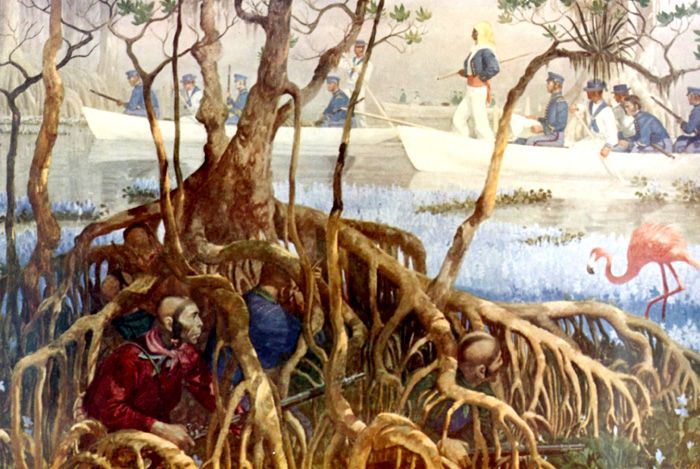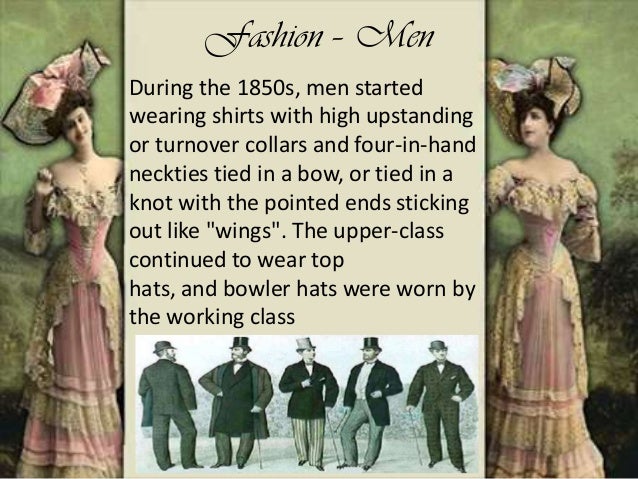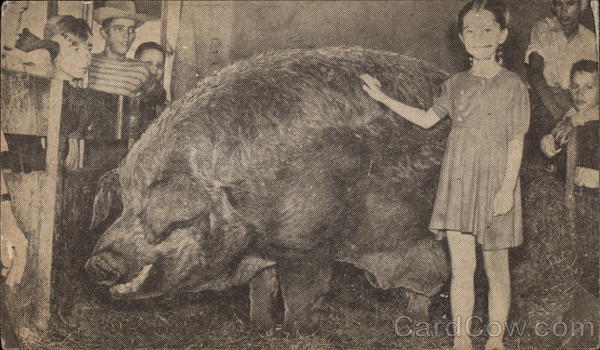Hero of Withlacoochee
___________________________
Duncan Lamon Clinch
Nash County, NC
Native
___________________________
Seminole Indians Prevail in Western Florida
It was a
moment of indecision for the 27-year army veteran, Gen. Duncan Lamon Clinch, as
he sat on his horse watching the Withlacoochee River, in western Florida, swirl
before him—deep and 150 feet wide. He had expected to find a place where his
men could ford the river, but torrential rains had made that impossible. The
Seminole Indians, led by Osceola, were somewhere on the south side of the
river, while he, with his 750 soldiers, was on the north side with no boats or
rafts. What led to this dilemma?
 |
Seminole Chief Osceola
[Taken from Legends of America
https://www.legendsofamerica.com/seminole-wars/ ] |
In 1834,
Clinch was assigned to oversee the "peaceful and harmonious removal of the
Indians [from Florida],
according to their treaty with the U. States." He soon became convinced
that "… they have not the least intention [of leaving] … unless compelled
to do so by a stronger force than mere words." At a conference in March
1835, Clinch met with individual Seminole chiefs, hoping to persuade them to
agree to move the following spring. He tried to convince them "of the
utter folly of attempting to resist …; as it would bring misery and ruin upon
their wives and children and on their Nation."
At a
council on April 22 the Indian chiefs all expressed opposition to the proposed
move. However, Gen. Clinch declared that "he had been sent here to enforce
the treaty; he had warriors enough to do it, and he would do it." The next
day, 8 chiefs agreed to abide by the treaty, while 6 refused. The Indian agent,
Wiley Thompson, declared the 6 resisters were no longer chiefs, and scratched
their names from the roll of council members.
During the
summer of 1835, as plans were made for the Indian removal, it became evident
that many of the Indians would not go peacefully. By October, Cinch was
convinced there would be war. The settlers felt threatened and were demanding protection.
There were not enough troops to fight the Indians and patrol the settled areas.
The government, underestimating the number of Indians in the area, thought a
"show of force would cow the Indians into submission; they utterly failed
to comprehend what a determined band—even a band of poor fighters—could
accomplish. …"

In
November, in preparation for war with the Indians, General Clinch began to move
his men to his plantation, Auld Lang Syne, where he built Fort Drane.
There were six companies of regular army troops, totaling about 250 men. On
Dec. 24, Gen. Richard K. Call arrived with 560 mounted militia. Clinch was
confident of his ability to defeat the Seminoles. However, the optimistic
General was unaware that the militia under Call had only agreed to serve until
Jan. 1, 1836—only a few days more.
An Indian
scout informed Clinch that the Indians were gathering at a town about 35 miles
south of the Withlacoochee
River and plans were made
for an immediate attack. Unknown to Clinch and Call, however, the Seminoles had
attacked first. On December 25, the Second Seminole War began with furious
Indian attacks on plantations across Florida.
Gen.
Francis Dade had been ordered to march his troops along the military road from
Fort Brook in southern Florida to Fort King
in the north to assist Clinch. When Gen. Call learned of this, he told Clinch
that the only thing that would save Dade was to have disobeyed the order to
march. "Disturbed as the country is through which he must pass, he can never
reach you."
Call was
right. On Dec. 28, the Indians ambushed and massacred the troops on their
march, leaving only 2 survivors to tell the story. On the same day, Osceola
killed Indian Agent Wiley Thompson. Gen. Clinch was unaware of those
developments as he prepared to leave Fort
Drane.
On Dec. 29,
Gen. Clinch, Gen. Call and their force of about 750 men left Fort Drane,
marching south toward the Withlacoochee
River. Gen. Call advised
Clinch to move speedily to reach the Indian town, but Clinch did not agree.
Call later declared that Clinch "… set out with every cart and wagon, mule
and horse, he could raise on his plantation, or among his troops." With
the noise of "horses pulling wagons out of the mud, and men struggling to
carry supplies through the swamps," along with dogs running back and
forth, flushing birds and barking fiercely, the army's arrival at the river
would be no surprise to the enemy. It took three days to reach the Withlacoochee River instead of the expected one day.
Clinch Makes a Decision
As Clinch
surveyed the raging river, trying to decide whether to continue his march or to
retreat to Fort Drane, he was certain he had the
superior force, and that the destruction of the Indian village would make the
Indians agree to the migration. However, the one thing he had not included in
his supply train was boats or rafts. The only vessel available to the army was
one abandoned, leaky canoe. With two men paddling, no more than 5 men and their
equipment could be carried across on each trip. The transfer would take hours.
Unaware that war had already begun and that the Indians were waiting in ambush,
he decided to move his men across the river. After all, this was the only day
he would have the volunteers as they would be free to leave the next day.
The canoe
made trip after trip, moving the regular troops to the south side of the Withlacoochee River. With no Indians in sight, the men
who had been transported marched about 500 yards and stacked their guns and rested.
Scouts pointed to signs that a large band of Indians had been there recently,
but the transportation continued.
It was
12:30 by the time the regular army was safely on the south side of the river. They
made their way to a clearing surrounded on three sides by hammocks [elevated
areas covered in trees] thick enough to conceal enemy warriors. The open
terrain presented a perfect killing zone, and the Indians took full advantage
of it. The regular force, resting in the middle of the open field, was ambushed
by an army of 250 Seminoles led by Osceola. "… [T]he woods seemed to belch
shot and sound. … Soldiers grabbed their guns and quickly formed a two-man-deep
line of battle. … The regulars returned a devastating fire that drove the
attackers back among the protecting trees."
When Clinch
reached the scene, he ordered the men to spread out and charge the Indians. At
one point, the general shouted, "Men,
I am ready to die on the spot if necessary, but not to retreat."
The
Seminoles fell back to regroup. During this time, about 50 volunteers managed
to cross the river to aid the regulars. The volunteers quickly formed two
companies and anchored themselves on the flanks of the regulars to prevent them
from being cut off from the river. Clinch led his men in two more fierce
charges, walking back and forth along the line after his horse was wounded.
Finally the Indians retreated into the trees and swamp. The soldiers had held
their line.
The battle
lasted about an hour. Clinch reported that he had 4 men killed and that over
100 Indians had died. The number of Indian casualties was never verified. One
soldier, Lt. Chubb, displayed 2 scalps. His wife was not the most
"credulous of wimen" and he needed evidence to convince her and his
neighbors of his bravery.
Fierce Warriers
 |
Dade Massacre, Florida
[Taken from Legends of America
https://www.legendsofamerica.com/seminole-wars/ ] |
In his
book, Aristocrat in Uniform, Rembert
Patrick described the Indian warriors: "The savages … made a most
terrifying picture; their almost naked bodies painted in brilliant colors of
war, their heads shaved except for a tuft of hair on top (which seemed to
indicate both their willingness to be scalped and their desire to take souvenirs
from the heads of the soldiers), and their bloodcurdling yells that echoed
through the forests." Later, those who took part in the battle were to
recall the "continual screeching and yelling of the Indians. … Their war
cries began with a low growling noise and rose to a final crescendo that burst
into a fiendish, nerve-shattering yell. After each shot the Indian uttered his
frightful whoop, threw himself leftward to the ground (to confuse the soldiers
who often fired directly at the flash of the Indians musket), and in his prone
position hastily reloaded his gun."
Return to Fort
Drane
Clinch
decided not to continue his march. Their supplies were inadequate to continue,
the term of enlistment was over for the militia, and there were many injured
soldiers that would hinder any movement of the command. Cypress logs had collected at a bend in the
river and these were lashed together, along with the canoe, to form a crude
bridge across the river. By evening, all the men were safely back on the north
side of the river. Some horses and many guns were left behind and retrieved by
the Indians. On Jan. 1, 1836, the army retreated back to Fort Drane.
The Seminoles now believed that they could hold off any invader in their
homeland.
This was
Gen. Clinch's largest battle during nearly 28 years of army service. He had
underestimated the enemy and had suffered what many deemed a defeat. However,
he could be proud of his performance under fire and the fact that he brought
his troops home with only 4 casualties.
Later,
Osceola sent Clinch the following message: "You have guns and so have we; you have powder and lead and so have we;
you have men and so have we; your men will fight, and so will ours until the
last drop of Seminoles' blood has moistened the dust of his hunting
grounds."
A private
who served under Clinch wrote the following to a New Hampshire Paper:
"General Clinch received several balls in his clothes, and one through his
cap, passing not an inch above his head. … when the balls pored like hail
around him, not a muscle of his face moved …; a majority of the Indians
present, probably knew him personally; … their fire was directed particularly
at him—but he quailed not, calmly giving his orders and attending to their
execution. … " In later years, he became known as the "Hero of
Withlacoochee" and "Old Withlacoochee."
This marked
the beginning of what would be 7 years of savage war with the Seminoles that
finally ended in 1842. The army captured many Indians, especially women and
children, and moved them to the Indian Territory.
About 500 Seminoles managed to hide in the Everglades and swamps of southern Florida where the white
men were afraid to venture. The price of the war was the lives of over 1,500
solders and $20 million. It is unknown how many Seminoles died.
Life of Duncan L. Clinch
Duncan
Lamon Clinch was born in Nash County,
NC on 6 April 1787. His parents
were Mary Lamon and Joseph John Clinch. Mary was
the daughter of Duncan Lamon who was well known in Nash and Edgecombe Counties.
He received a grant in 1761. He served in the provisional congresses of NC and
was a justice of the peace in Nash Co. after its establishment in 1777.
 |
Portrait of U. S. General Duncan L. Clinch - New Smyrna, Fl. 18--
Black & white photoprint, 8x10 in. State Archives of Florida, Florida Memory.
https://www.floridamemory.com/items/show/31295,accessed 17 November 2018. |
Duncan's
father, Joseph Clinch, moved, as a child, with his family to Edgecombe County,
NC from Isle of Wight Co., VA. The family settled near Tarboro, NC.
Joseph joined the Continental forces on April 22, 1776 and family records
indicate he was briefly an aide to Gen. George Washington. He returned to
Edgecombe Co. and raised and equipped a militia regiment. After the Revolution,
Joseph acquired land in Nash Co. and built a house on Swift Creek near the
present-day Rocky Mount, NC. A bridge across the creek is still known
as Clinch's Bridge. Joseph's wife, Mary, died in 1792, and Joseph died in 1795.
Thus, Duncan Lamon Clinch was left an orphan at the age of eight. He received
378 acres of land from his father's estate, which he sold to William Bellamy in
1809 for $1200. No other records of his childhood have been found.
 |
| [Taken from Faith and Heritage: A compilation of Nash County historical notes] |
In 1808, US Congressman
Thomas Blount recommended Duncan for a commission as a First Lieutenant in the
Third Infantry of the U.S. Army. He was promoted to Captain in 1810, Lt. Col.
of the 43rd Regiment in 1813, Col. of the 8th Regiment in 1819, and
Brigadier General in 1829.
After the
Battle of Withlacoochee, he continued to fight the Indians as part of Maj. Gen.
Edmund P. Gaines' force until he retired September 21, 1836. He settled on a
plantation near St. Marys, GA and was elected as a Whig to the
Twenty-eighth Congress to fill the vacancy caused by the death of John Millen.
In 1847,
Georgia Whigs selected the "Hero of the Battle of Withlacoochee" to
be their candidate for governor. He was defeated.
Duncan
Clinch was married first to Eliza Bayard McIntosh. Theirs was a love match and
they had 8 children: 1) Eliza Bayard Clinch, who married Robert Anderson, who
defended Fort Sumter in 1861; 2) John Houstoun Clinch, married Elizabeth Higbee
Waldburg, of Georgia; 3) Mary L. Clinch; 4) Duncan L. Clinch, married Susan
Hopkins, of Georgia; 5) Catherine M. Clinch, married Barnwell Heyward, of SC;
6) Henry A. Clinch, married Ella Ford; 7) Nicholas Bayard Clinch; and 8) George
W. Clinch, married Catharine Ferris, of Florida.
In 1834,
when Clinch was transferred to Florida, Eliza
remained in Mobile, AL with the children. In March, 1835, their
son, Duncan, 9 years old, contracted scarlet fever. Eliza sent the other
children away and nursed little Duncan
until he began to recover. On April 10, she joined her other children for a
shopping trip. The next morning, she was stricken with fever, and, tired and
worn from her son's illness, she died on April 15.
After his
retirement in 1836, Clinch married Elizabeth Bayard Houstoun, who had helped to
care for Clinch's children after the death of Eliza. Elizabeth was in her mid-thirties and had
never married. She was a good mother to the children and helped Duncan refurbish his
home. She died in August, 1838.
Duncan Clinch
married a third time, to Sophia Hermes Gibbs Couper, an attractive 33-year-old
widow, in February 1846. His third marriage, like his first, was a love match.
Sophia lived until 1903.
In 1849,
Damon Clinch and his family stayed later than usual at their summer home in
Habersham County, GA. They left by stagecoach in November, taking a train from Athens, GA to Atlanta.
From Atlanta, they went on to Macon where Clinch was forced to rest. He
died there on Nov. 27, 1849. He was buried in Bonaventure
Cemetery, in Savannah, GA. The Southern Whig reported, "The
distinguished patriot and soldier is no more."
In 1851, Clinch County, GA was
established on the Florida
border in honor of Duncan L. Clinch.
(The
Seminoles were Creek Indians who fled to Florida,
controlled by Spain,
to escape being enslaved by the British. They adopted many ways of the white
man. Many blacks that had escaped slavery in Georgia
and the Carolinas came to Florida
and lived near the Seminoles. A union was formed between them because they had
a mutual fear—slavery. The bond was so strong that the U.S. could not
break them apart. The blacks became known as the black Seminoles.)
 |
Much of the Seminole Wars were fought in the swamps of Florida
[Taken from Legends of Americahttps://www.legendsofamerica.com/seminole-wars/ ] |
[Primary Sources: Aristocrat
in Uniform; General Duncan L. Clinch, by Rembert W. Patrick; American Military Strategy During the Second
Seminole War, by John C. White, Jr.]


















